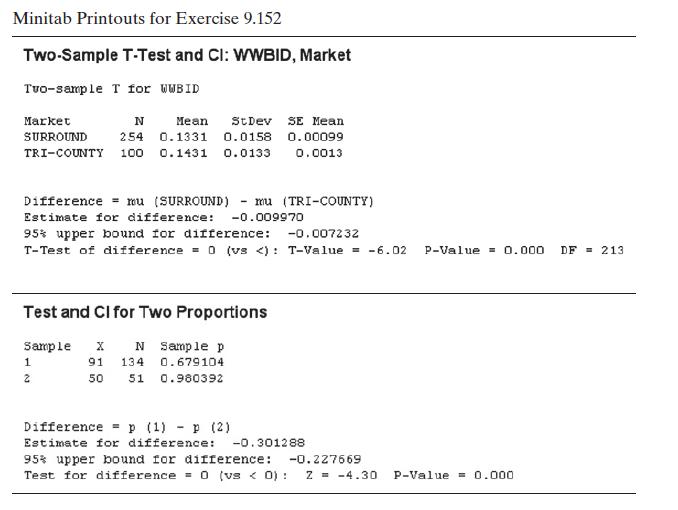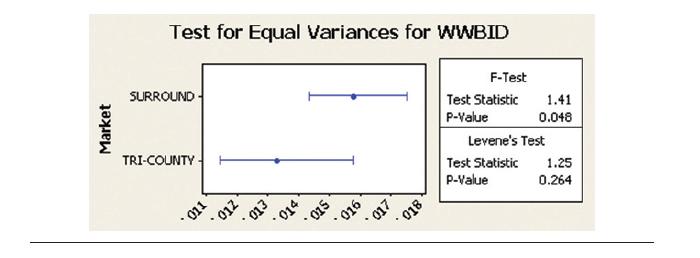Detection of rigged school milk prices. Each year, the state of Kentucky invites bids from dairies to
Question:
Detection of rigged school milk prices. Each year, the state of Kentucky invites bids from dairies to supply half-pint containers of fluid milk products for its school districts. In several school districts in northern Kentucky (called the “tri-county” market), two suppliers—Meyer Dairy and Trauth Dairy—were accused of price fixing, that is, conspiring to allocate the districts so that the winning bidder was predetermined and the price per pint was set above the competitive price. These two dairies were the only two bidders on the milk contracts in the tri-county market for eight consecutive years. (In contrast, a large number of different dairies won the milk contracts for school districts in the remainder of the northern Kentucky market, called the
“surrounding” market.) Did Meyer and Trauth conspire to rig their bids in the tri-county market? To answer this question, data on all bids received from the dairies competing for the milk contracts during the period in question are provided and saved in the MILK file.
To help you in your analysis of the data, consider the following established economic theories that hold when collusive bidding exists: (1) The mean winning price in the rigged market will be higher than the mean winning price in the competitive surrounding market; (2) since dairies operating in a competitive market are likely not to share information about their bids, the variability in winning bid prices in the competitive market will exceed the corresponding variability in the rigged market;
and (3) because dairies fixing prices usually control the market year after year, the rigged market incumbency rate (defined as the proportion of school districts that are won by the dairy that won the previous year) will exceed the incumbency rate of the competitive market and will likely exceed .90. [Note: Examining the data in the MILK file, you’ll find that in 50 of the 51 potential vendor transitions for the tri-county market, the winning dairy from the previous year won the bid the next year; similarly, you’ll find that in 91 of the 134 potential vendor transitions for the surrounding market, the same dairy won the bid the next year.] Several MINITAB printouts of the analysis of the data follow on the next page. Use this information to determine if there is evidence that Meyer and Trauth conspired to rig their bids in the tri-county market.

Step by Step Answer:

Statistics Plus New Mylab Statistics With Pearson Etext Access Card Package
ISBN: 978-0134090436
13th Edition
Authors: James Mcclave ,Terry Sincich





